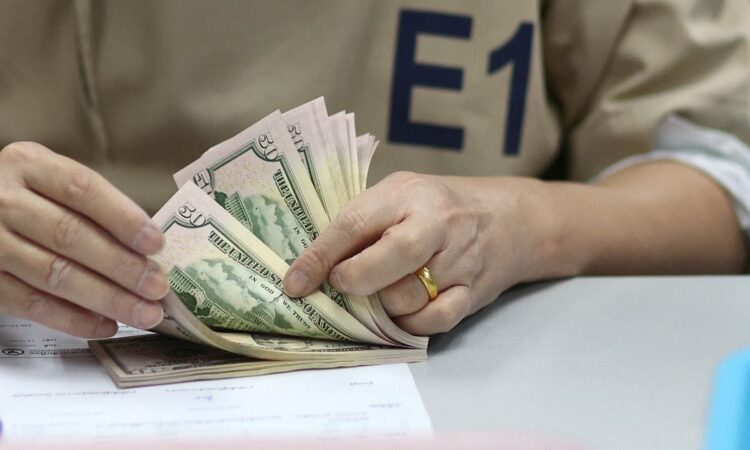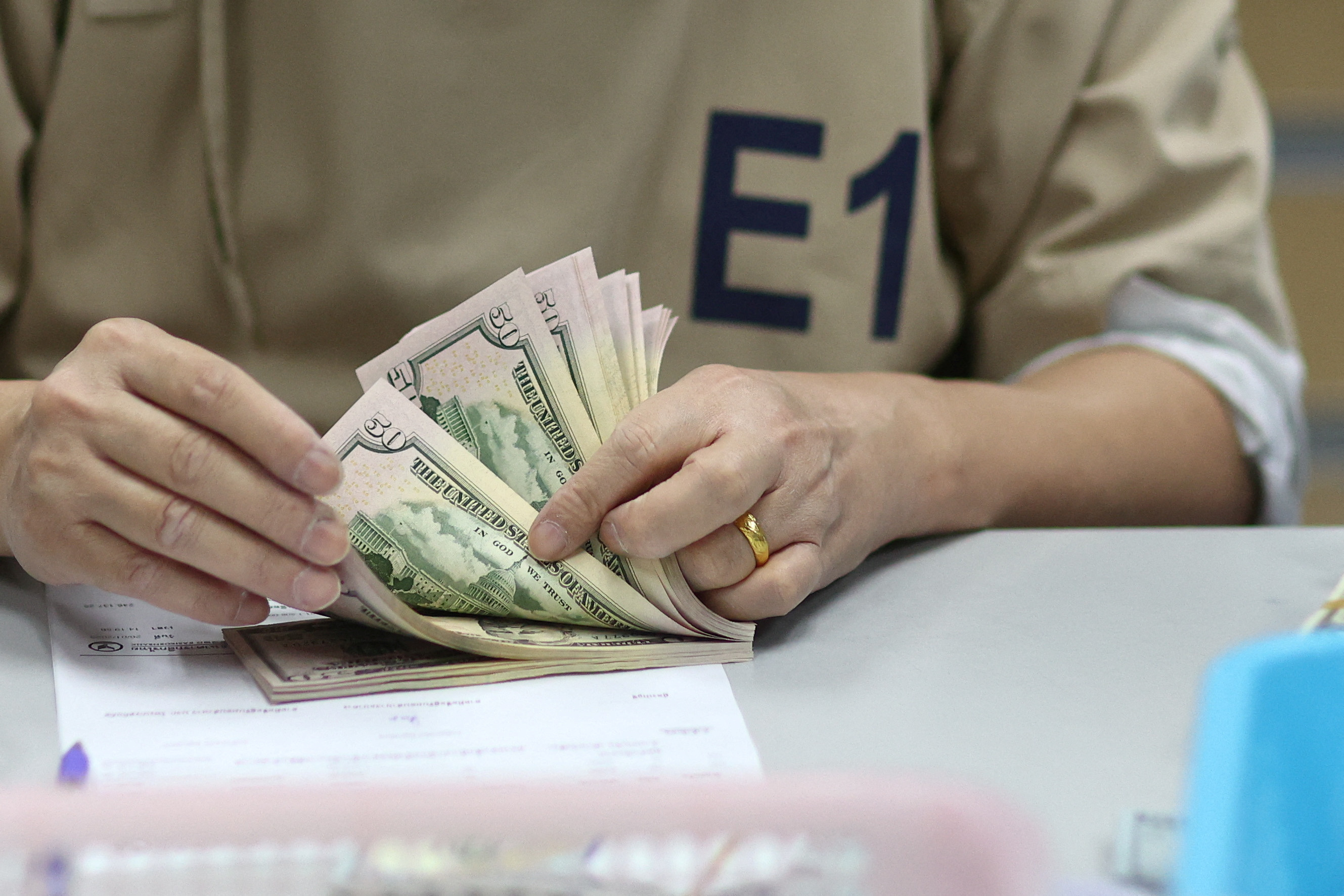

A bank employee counts U.S. dollar notes at a Kasikornbank in Bangkok, Thailand, January 26, 2023. REUTERS/Athit Perawongmetha Acquire Licensing Rights
SINGAPORE, Nov 27 (Reuters) – The dollar kicked off the last week of November on the back foot while sterling held near an over two-month high on an easing economic gloom in the UK, as traders eyed fresh economic cues in the week ahead to determine the future path of policy rates.
A postponed OPEC+ meeting, data from the Federal Reserve’s favoured measure of inflation alongside inflation readings in the euro zone and Australia fill this week’s calendar, which will also see a rate decision from the Reserve Bank of New Zealand (RBNZ) and Chinese PMI data.
Sterling was last 0.06% lower at $1.2598, but hovered near Friday’s over two-month peak of $1.2615, on data last week showing that British companies unexpectedly reported a marginal return to growth in November after three months of contraction.
“That indicates the resilience of the UK economy despite the very aggressive monetary policy tightening from the Bank of England,” said Carol Kong, a currency strategist at Commonwealth Bank of Australia (CBA). “But we still expect the UK economy to weaken and experience a short-lived recession.”
The pound was on track for a roughly 3.7% gain for the month, its largest monthly gain in a year, aided by a falling U.S. dollar.
The Australian dollar likewise stood near a roughly three-month high and last bought $0.6578, ahead of domestic inflation data on Wednesday.
In the broader currency market, the U.S. dollar wobbled near its recent two-month trough against a basket of six peers, with traders, returning from the Thanksgiving lull late last week, eyeing U.S. core PCE prices due this week for clues on the Fed’s next steps.
The dollar index , which was last 0.08% higher at 103.51, was headed for a monthly loss of 3%, its worst performance in a year.
“We anticipate that the turnaround in the U.S. dollar will play out over a longer period,” said Jane Foley, senior FX strategist at Rabobank.
“Insofar as CPI inflation rates across much of the G10 are still above central bank targets, there is a strong incentive for policymakers to support the ‘higher for longer’ theme since higher market rates will help in the battle against inflation.
“Investors, however, are looking through this policy and appear increasingly pre-occupied about betting on the timing and pace of rate cuts next year.”
Market pricing shows a roughly 23% chance that the Fed may begin easing monetary policy as early as next March, according to the CME FedWatch tool.
The weakening greenback provided some respite for the Japanese yen, which sat on the stronger side of 150 per dollar and last stood at 149.52 per dollar .
Elsewhere, the euro slipped 0.03% to $1.0930, but did not stray far from an over three-month peak of $1.09655 hit last week.
A survey out last week showed the downturn in euro zone business activity eased in November but remained broadbased, suggesting the bloc’s economy will contract again this quarter as consumers continue to rein in spending.
The New Zealand dollar eased 0.1% to $0.6076, but was likewise hovering near Friday’s more than three-month high of $0.6096.
In the Middle East, Hamas freed 17 hostages in Gaza, including a 4-year-old American girl, while Israel released 39 Palestinian prisoners on Sunday, the third day of their truce.
“I think the issues in the Middle East have definitely become more of a background risk,” said CBA’s Kong. “The temporary truce may have supported risk sentiment and weighed on the U.S. dollar at the margin, but I don’t think the (conflict) will become a bigger influence on FX markets anytime soon, unless we see a major escalation.”
Reporting by Rae Wee. Editing by Gerry Doyle
Our Standards: The Thomson Reuters Trust Principles.





